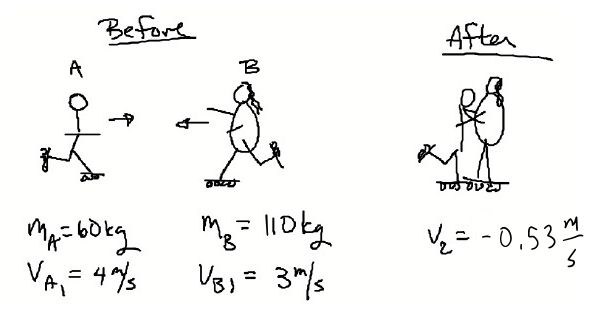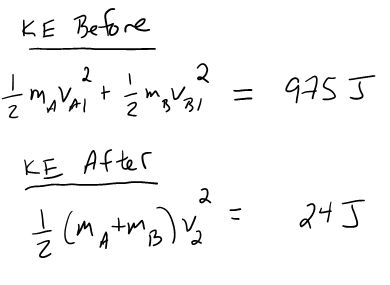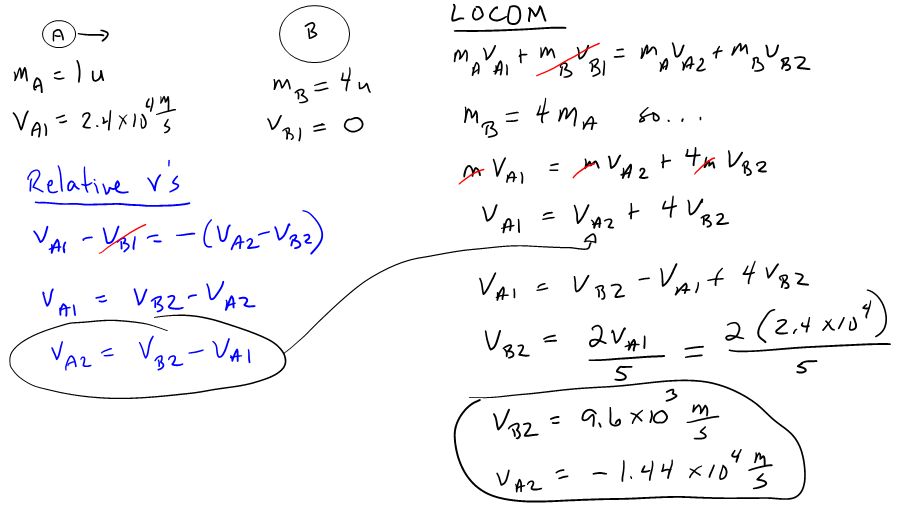Energy vs. Momentum
Let us consider the rollerskating collision example we 1st saw in the previous section of notes. Is Kinetic Energy conserved during the collision?


Where did the energy go? Does this violate the Law of Conservation of Energy? The LOCOE is not violated. The kinetic energy carried by the skaters is converted into other forms of energy, and most of it eventually becomes heat in the environment.
Elastic and Inelastic Collisions
The above collision of rollerskaters, where kinetic energy is not conserved, is a type of collision known as an inelastic collision. Most real collisions are inelastic.
If, however, kinetic energy is conserved during the collision (i.e. the combined KE of all the mass before and after the collision is constant), then the collision is said to be elastic. For macroscopic (large) objects like rollerskaters and cars, their collisions are unlikely to be elastic. However at the microscopic, atomic level, the collisions of individual atoms are elastic.
Play with the applet below and try to see the differences between elastic and inelastic collisions.
Elastic Collision Math
For collisions that are elastic, the relative velocities between the two masses that collide have the same magnitude before and after the collision, but opposite signs.
mAvA1 + mBvB1 = mAvA2 + mBvB2
and if elastic, then . . . vA1 − vB1 = −(vA2 − vB2)
For linear collisions that are elastic, this 2nd equation (the relative veloctity equation) will allow you to solve collision problems where there are 2 unknown speeds.
Example 9 - Billiards

Example 10 - Atomic interactions
